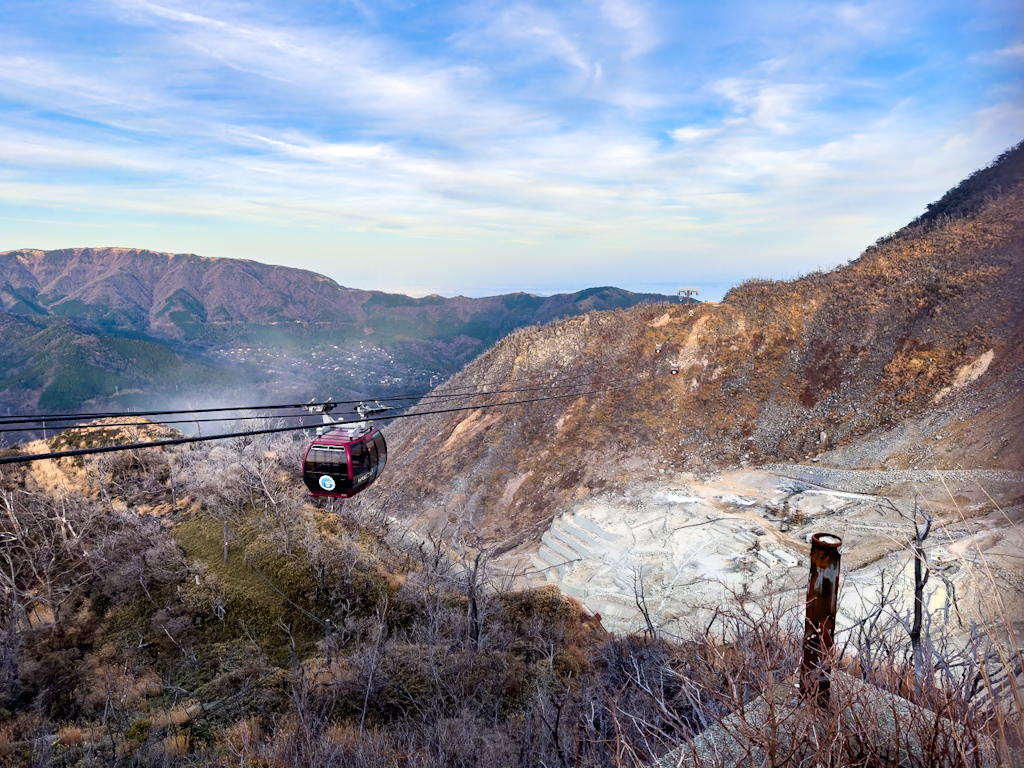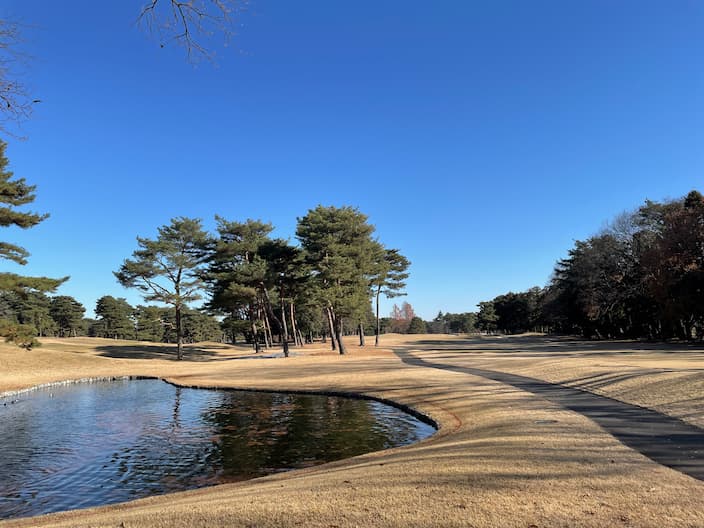Japan has become a golf-loving country on a par with the United Kingdom and the United States, but Kobe Golf Club, established in 1902, is the birthplace of golf in Japan, and its history will be exactly 120 years old this year. At that time, foreigners living in the settlement of Kobe set up villas on Mt. Rokko and built Japan’s first golf course.
On the other hand, in the Kanto region, a golf course for foreigners was established in 1906 at the Negishi Racecourse in Yokohama, which is close to the foreign settlement.
This was promoted by businessmen who experienced golf while living in New York and returned to Japan, Junnosuke Inoue, who has served as Governor of the Bank of Japan and Minister of Finance, Aisuke Kabayama (Jiro Shirasu’s father-in-law) who are close friends of Inoue and have been in America for more than 20 years. In 1914, more than ten years after Kobe Golf Club, the Tokyo Golf Club opened in Komazawa Village, Tokyo. It is said that Komazawa Village at that time was a wilderness where the Meiji Emperor would visit to hunt rabbits.
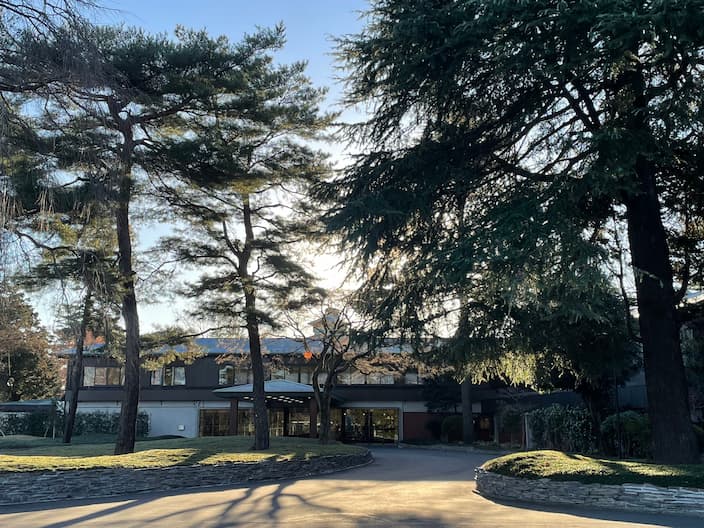
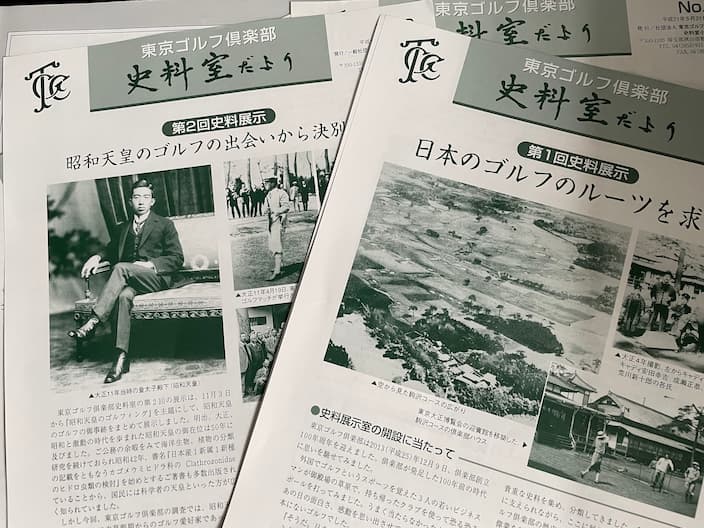
The course is small, with 9 holes and a total length of about 2,000 yards, but it is the first golf course designed by Japanese people for Japanese people, and can be said to be the origin of golf in Japan. The clubhouse is said to have been relocated from the guesthouse of the Taisho Museum to Commemorate the Enthronement of Emperor Taisho, which was located near Shinobazu Pond in Ueno.
However, some members felt that 9 holes were not enough, and in 1921 they established the “Hodogaya Country Club” and moved.
In 1922, a historical event called a friendly match between the Emperor Showa of the Prince Regent era and the British Crown Prince (Prince of Wales) was held.
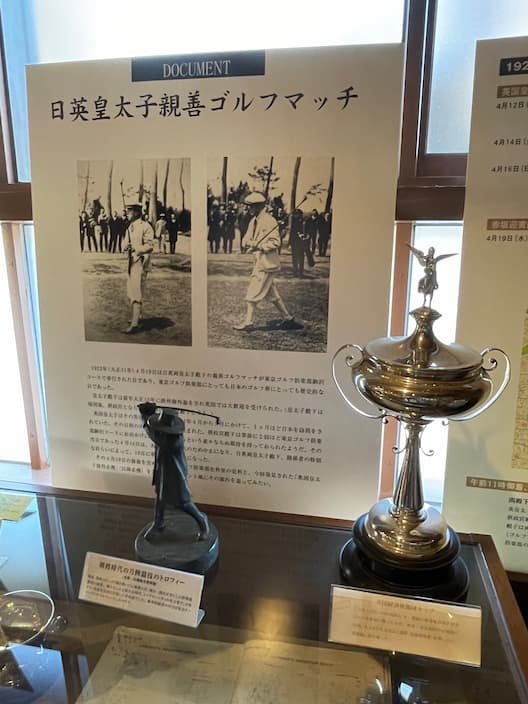
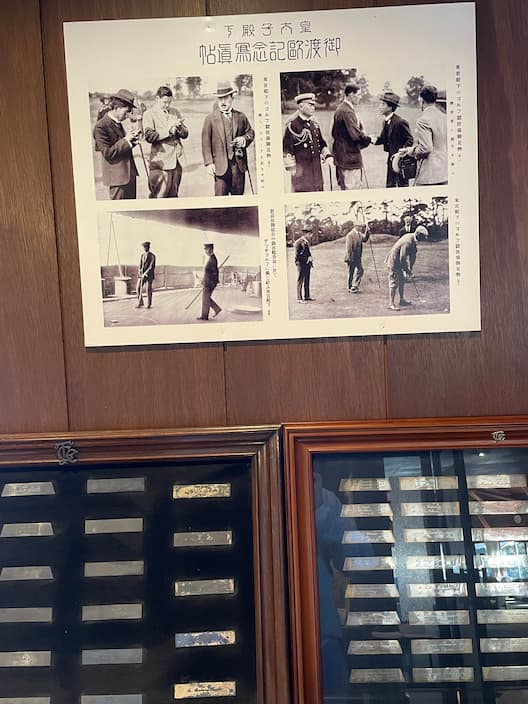
Later, in 1926, an 18-hole par 36 was added, but because the site area was small and the land was leased, the problems of rising land rents and the development of residential land in the surrounding area became more serious. In 1932, the club purchased new land in Saitama Prefecture and moved there.
Inviting British golf course designer C.H. Allison, the 6,700-yard par 74 full-length course with deep bunkers and ponds has been described as artistic. together with the white three-story clubhouse, it was said to be the best course in the Orient. It has become a glorious page in the history of Japanese golf, with visits from the United States such as the famous golfer Gene Sarazen and home run king Babe Ruth, as well as the venue for the Japan Open Golf Championship.
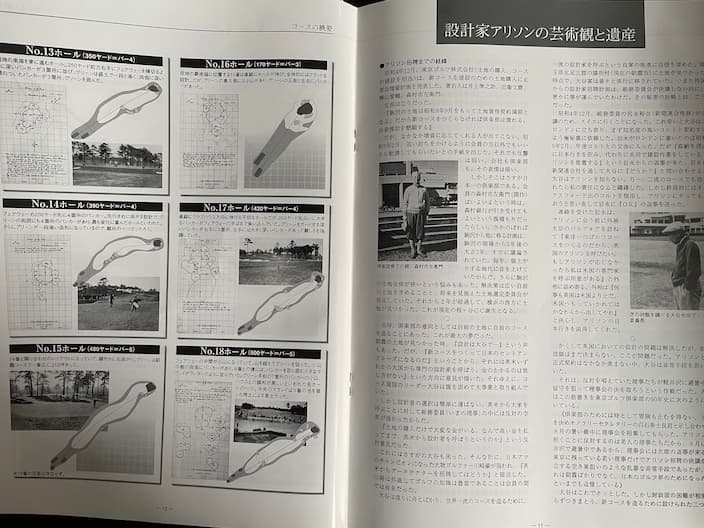
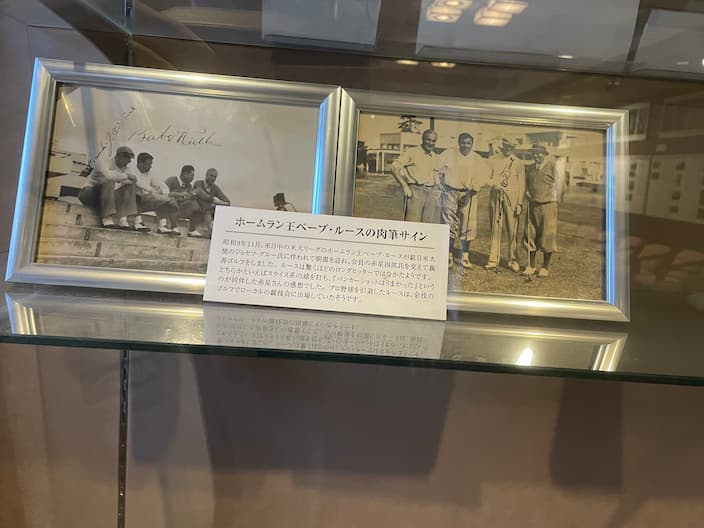
However, as the peaceful era did not last long and the footsteps of war approached, in 1940, the site was forced to be transferred to the army as a reserve military academy site, and the best course in the Orient closed its short history of less than nine years.
After the war, it became a camp for the U.S. Army, with approximately 4,000 U.S. soldiers stationed there. After the requisition was lifted, it became the Asaka garrison of the Self-Defense Forces, and has become a base for the defense of the capital, including the placement of major units such as the Eastern Command Headquarters etc.
The name of the town where the course is located, Asaka, is said to have been taken from Prince Hatohiko Asaka, a member of the royal family who was the president of this golf club.
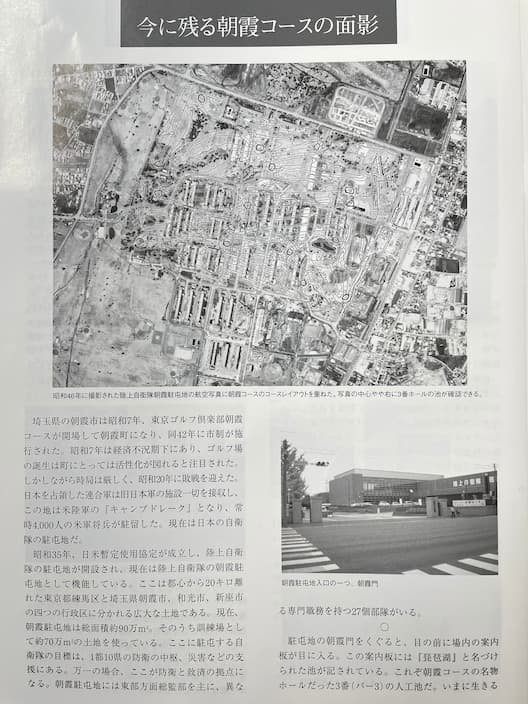
On the other hand, the former site of the Komazawa course was transferred to Tokyu Corporation and became a public golf course, a mecca for student golf. When the war began in 1941, it was requisitioned by the army and turned into a training ground, ending the history of the golf course, as same as Kasumigasaki course. After the war, a baseball stadium was built there and became the home of the professional baseball team “Tokyu Senators” (currently the Nippon-Ham Fighters). After that, it was used as a wrestling and volleyball stadium during the previous Tokyo Olympics held in 1964, and is now open to the public as the “Komazawa Olympic Park” to commemorate it.

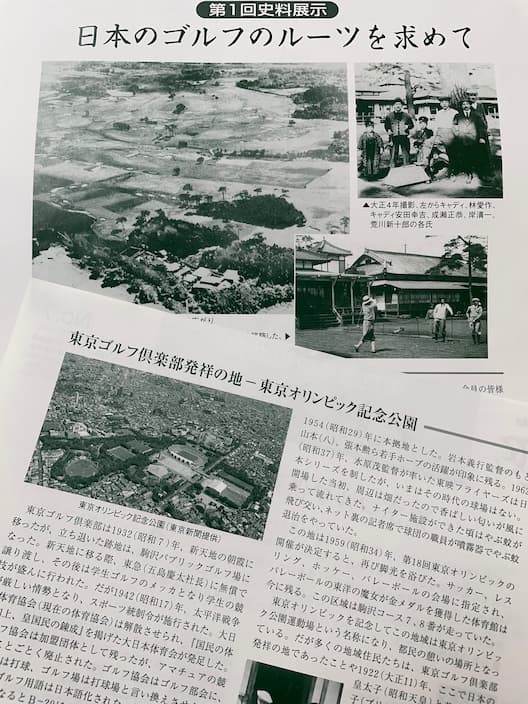
At that time, the Asaka course became military land and lost its place to go. In addition, the “Tokyo Golf Club” was in danger of survival in the social situation that it was not the time to play golf before the war.
At the same time, the 18-hole south course of the Chichibu Country Club in Saitama Prefecture, which had been under expansion for some time, was completed on land adjacent to the Kasumigaseki Country Club.
The course was designed by Komyo Otani, a member of the Tokyo Golf Club, and since there were members who overlapped with this club, the two clubs merged on equal position but the name was changed to “Tokyo Golf Club”. (The North Course of Chichibu Country Club was sold during the war and is now a residential area.)
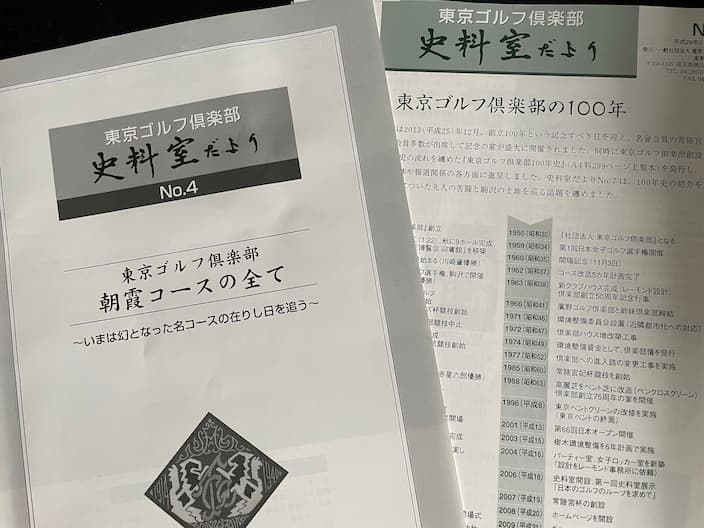
However, even though it was relocated, due to the intensification of the war, this course was also converted to farmland and was requisitioned by the army. After the war ended, it was requisitioned by the occupying forces of the United States until 1953. By the way, the use of hostile words was prohibited during the war, and the name of “Tokyo Golf Club” was changed to “Tokyo Hitting Club” in Japanese. The newly reopened “Tokyo Golf Club” has been remodeled several times to date, but it is said that it basically retains its appearance at the time of its opening designed by Komyo Otani.
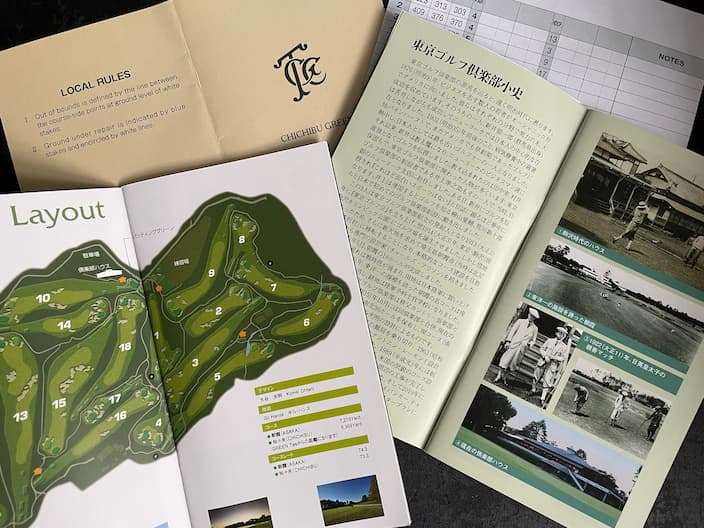
With a total length of 7,215 yards and a par 72, it is a prestigious course with a high degree of difficulty, with plenty of distance and many bunkers. Considered to be one of the best works by Komyo Otani, who designed many famous courses, since it has received high acclaim, including being selected as one of the top 100 golf courses in the world.
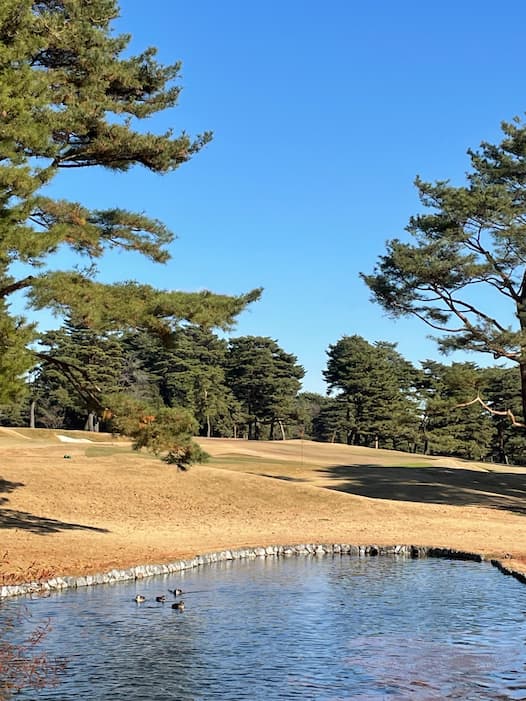

Komyo Otani, who lived in England for a long time and mastered golf, is said to have an admiration for the seaside links in his design concept, and the course has many large and deep bunkers that cannot be seen on other courses, that can be called sand seas.
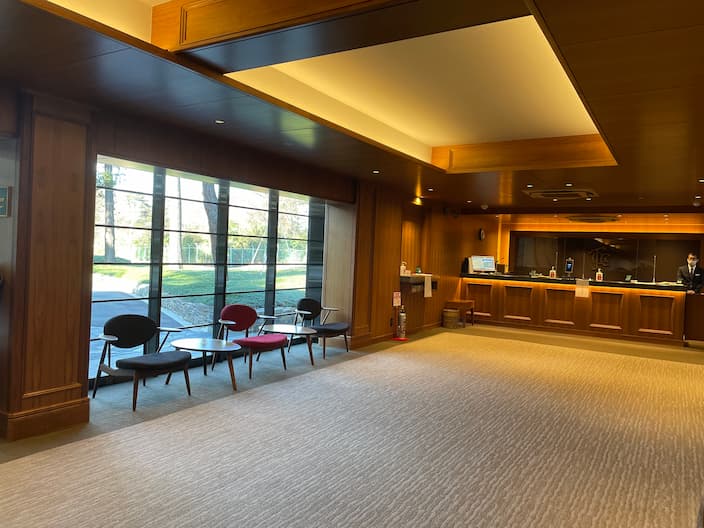
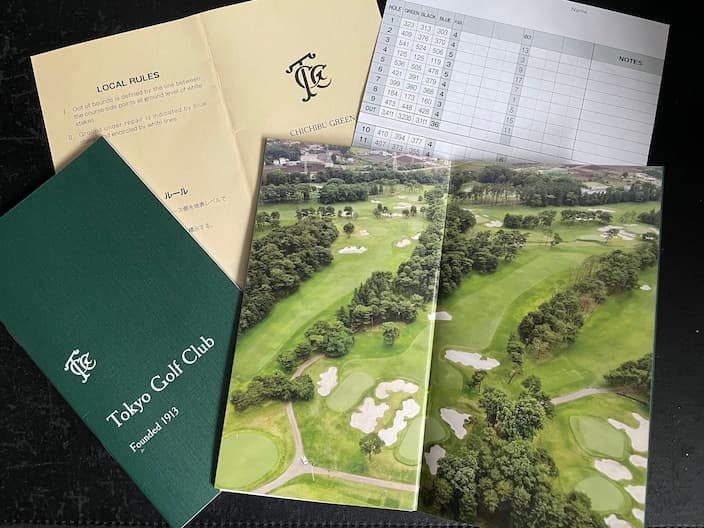
In addition, the Japan Open Golf Championship, Japan’s premier golf tournament, was held at the Komazawa Course in 1928. Since then, the three courses have been held seven times in total, and in 2024, the eighth tournament will be held. It can be said that this course represents the golf courses in Japan.
In 1963, on the 50th anniversary of the club’s founding, a new clubhouse was completed, which was designed by Antonin Raymond, a well-known Czech designer who also designed the former Asaka course clubhouse. In 2018, it was designated as a national registered tangible cultural property.
In addition, in 2013, the 100th anniversary of its founding, it was remodeled by Mr. Gil Hans, an American designer who also designed the new golf course for the 2016 Rio Olympics.
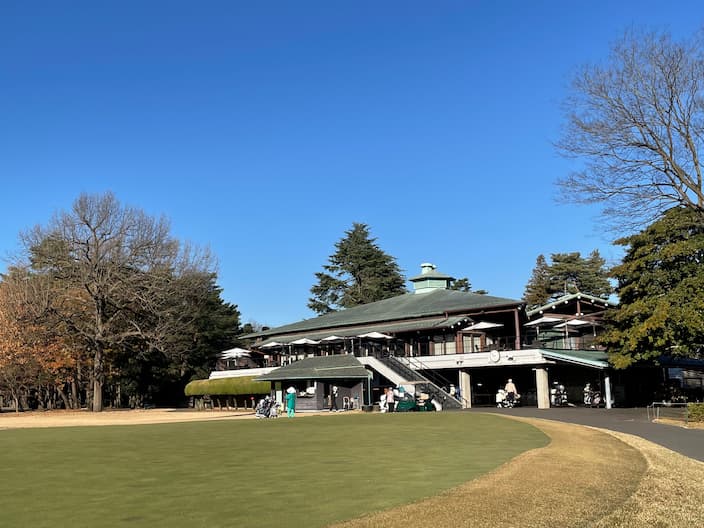
The log-built clubhouse has a simple yet serene and calm atmosphere, befitting a prestigious course, and on the second floor there is a “Historical Exhibition Room” unique to Tokyo Golf Club, which boasts a long history and tradition.
On display are photographs of the “Japan-British Crown Prince friendly match” at the time of the Komazawa course, golf clubs, trophies with chrysanthemum crests, autographs of Babe Ruth who played on the Asaka course, and many other valuable materials. Therefore, not only members but also visiting players can touch the history of the club by looking at these exhibits.
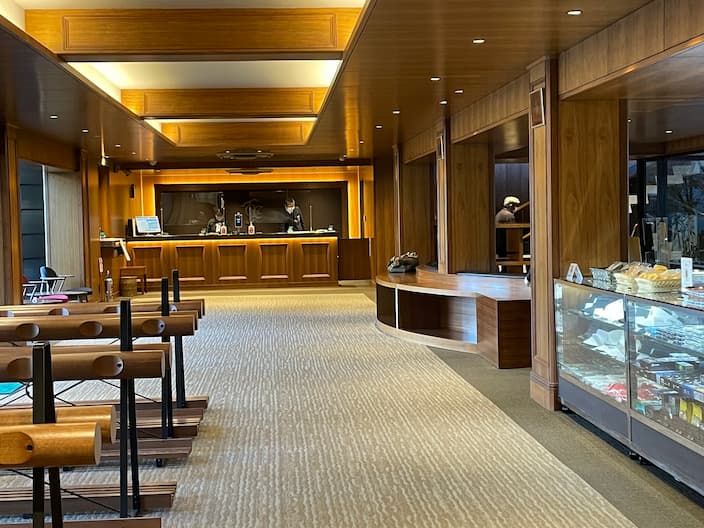
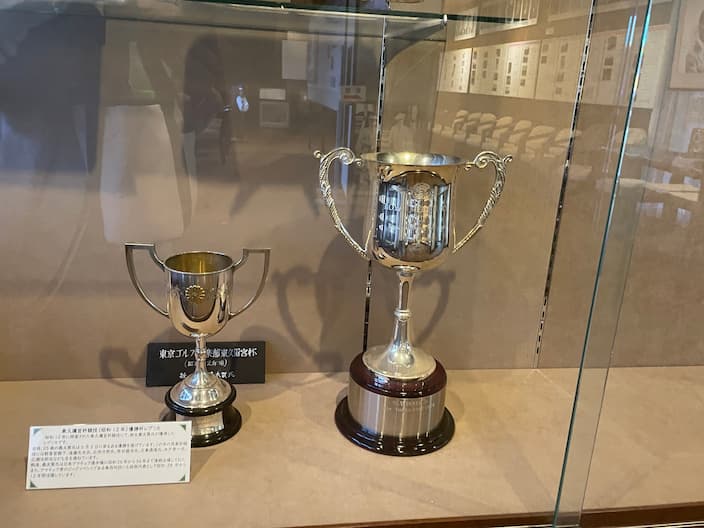
Next to the exhibition room is a break lounge with comfortable sofas and a fireplace in the center, and beyond that is a restaurant with minimal decoration. The downstairs locker room is also simple with inorganic steel lockers lined up.
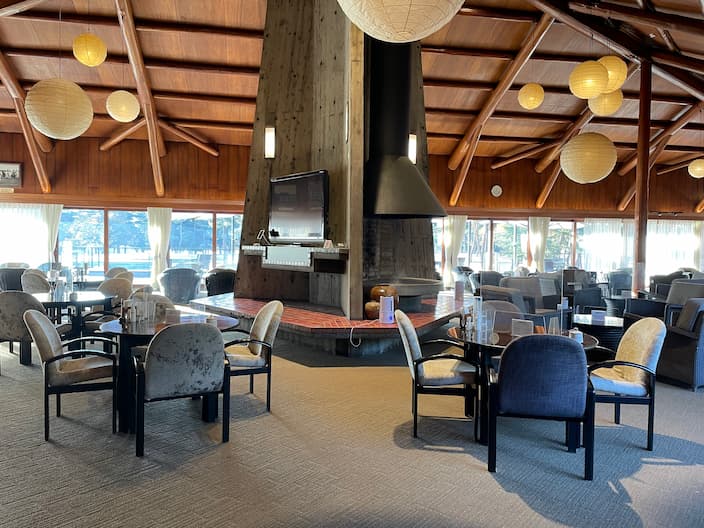
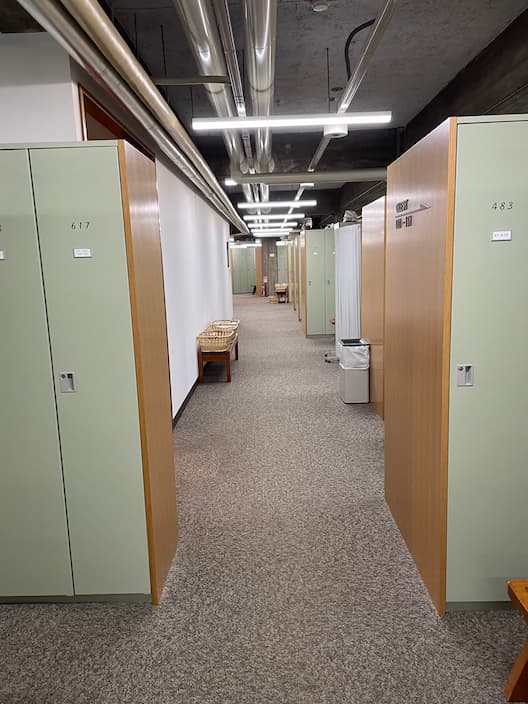
As for the course, there are 2 bent greens, Asaka Green and Chichio Green. The distance is 7,215 yards for Asaka Green and 6,959 yards for Chichio Green.
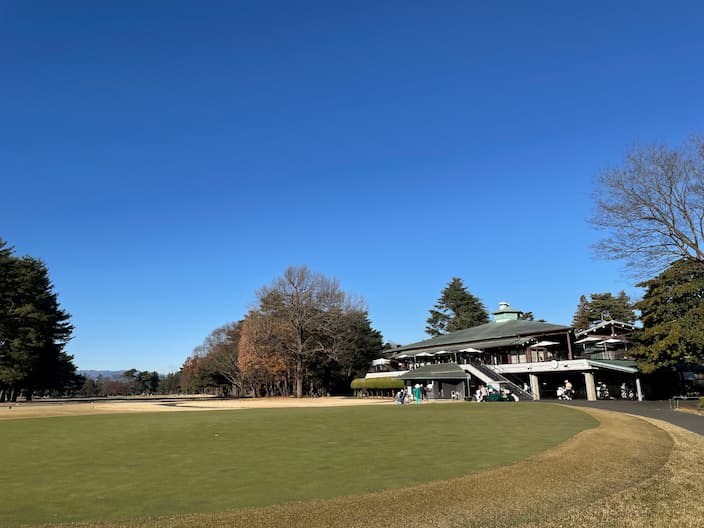
The fairway is flat and wide, but it is a forest course separated by tall trees. Surprisingly, there are 117 bunkers in total, and there are not only guard bunkers around the green, but also cross bunkers on the fairway. In addition, the beauty of the shape that inherits the tradition of Allison bunkers on the Asaka course has a high chin on the green side, so if you are unlucky and put the ball into the bunker, most of the time you have to get it close to the bunker.
Especially in relatively short distance holes, there are many bunkers surrounding the elevated green, and there are holes where there is no runway. Approach shots need to hit a ball that stops firmly. And the hard part is on the green. There are many relatively small hilly greens, as well as strong undulations and good rolling, all of which make putting difficult.
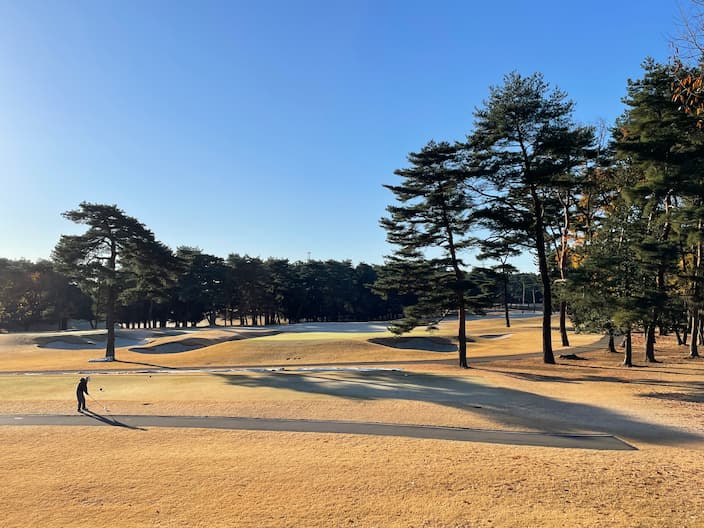
Since this artcle got long, I’ll talk about each hole of “Tokyo Golf Club”. See you!
Tokyo Golf Club
| Address | 1984 Kashiwabara, Sayama city, Saitama prefecture |
| TEL | +81-(0)4-2953-9111 |
| Website | https://www.tokyogolfclub.jp/english/ |


